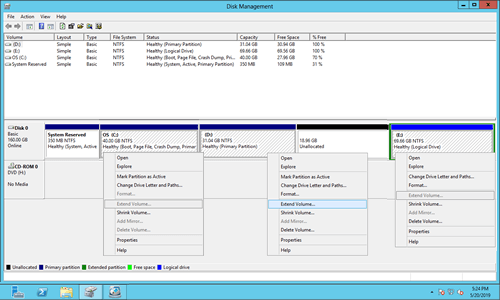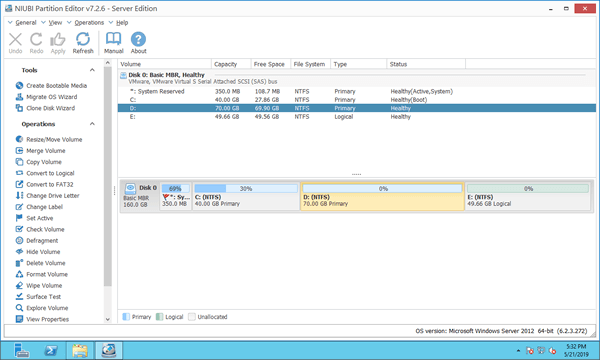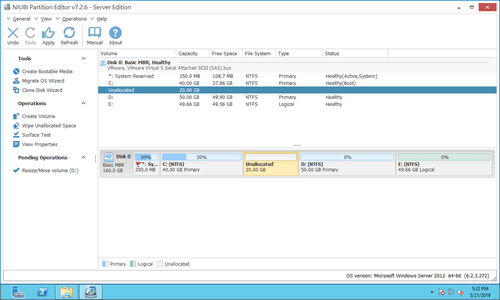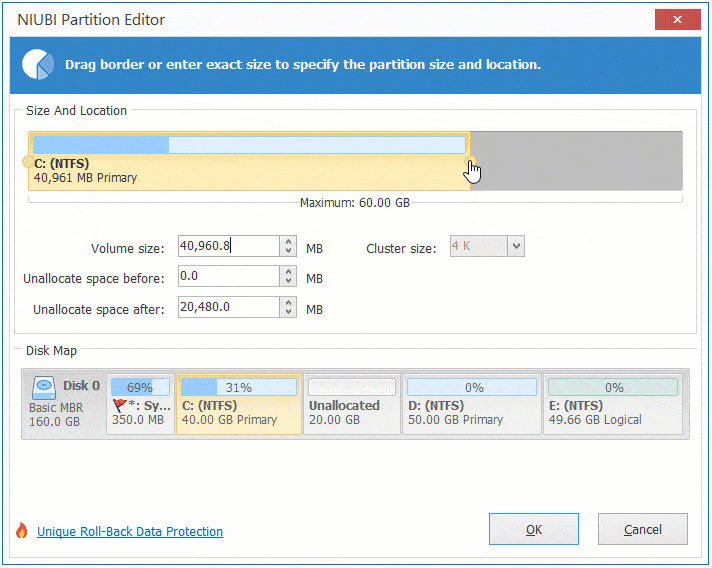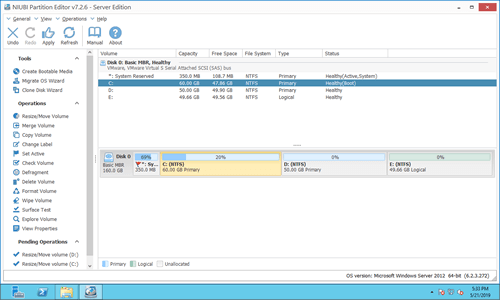The most common issue in a server is low disk space on system partition C. In most cases, there is other volume with plenty of free space on the same disk. Then is it possible to shrink this volume to expand system partition without losing data? The answer is yes. You may change partition size with either inbuilt Disk Management tool or safe partition software. This article introduces 3 ways to resize system partition C in Windows Server 2012/2016/2019.
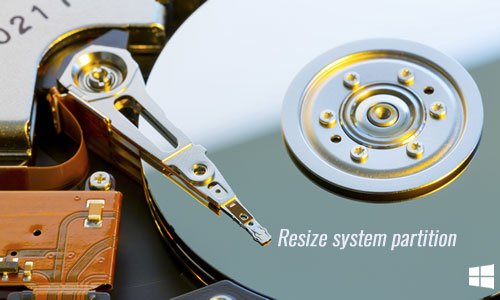
Resize C drive in Server 2012 Disk Management
Disk Management is safe in most cases but it only works under specific condition. Third party tool is much more powerful but there is system damage and data loss risk if you use some unreliable software.
Firstly, let's see how to resize system partition in Windows Server 2012/2016/2019 with Disk Management.
Press Windows and X on the keyboard, then click Disk Management from the list. When you right click the system partition C, Extend Volume is disabled. Before extending this partition, you need to delete or shrink other volume to get unallocated space.
The major restrictions of Disk Management include:
- Extend Volume function can only combine unallocated space to the left contiguous partition.
- Shrink Volume can only make unallocated space on the right while shrinking any partition.
- It cannot move the position of any partition or unallocated space.
So, you cannot extend system partition by shrinking any other volumes. The only option is by deleting the adjacent drive (D:).
If you cannot delete D or there is no other partition in the same disk, Server 2012 Disk Management is useless.
If you can delete the right contiguous partition (D:), right click C: drive and select "Extend Volume", simply click Next in the pop-up "Extend Volume Wizard" window.
Resize system partition with drive D or E
Server partition software can shrink drive D and make unallocated space on the left side, then you can resize system partition C with either tool. If you have shrunk D via Disk Management or there is not enough free space in the contiguous partition, you can shrink drive E and move unallocated space next to C drive.
However, as I said in the beginning, there is potential data loss risk, so you'd better back up first and run safe partition software. Better that other tools, NIUBI Partition Editor has innovative technologies to protect data and save time.
- Virtual Mode - all operations will be listed as pending for preview, real disk partitions won't be changed until click Apply to confirm.
- Cancel-at-will - if you applied wrong operations, you can also cancel the ongoing operations without causing damage.
- 1 Second Rollback - if any error is detected while resizing or moving partition, it is able to automatically reverts server to original status in a flash.
- Hot Clone - clone disk partition in Windows without server interrutpion.
- Advanced file-moving algorithm - resize and move partition 30% to 300% faster, saving much time especially when there are large amount of files.
Download NIUBI Partition Editor and you'll see all disk partitions with structure and other information.
There is C, D, E and system reserved partition in Disk 0. Original C: drive is 40GB and D: is 70GB. To resize partitions, you just need to drag and drop on the disk map.
How to resize system partition C in Windows Server 2012/2016/2019:
Step 1: Right click the contiguous partition (D:) and select "Resize/Move Volume", drag left border towards right in the pop-up window to shrink it. (or enter an amount in the box "Unallocated space before")
Step 2: Right click system partition C: and select "Resize/Move Volume" again, drag right border towards right to combine unallocated space.
Step 3: Click Apply on top left to take effect to real disk partition.
Watch the video how to resize system partition in Windows Server 2012 by shrinking other volumes:
Adjust system partition size with other disk
A hard disk is physical unit and the size is fixed, so no partitioning software can extend system partition by adding space from another separate disk.
If there is no other partition or not plenty of free space in other partitions on the same disk, you can copy entire disk to a larger one and enlarge system partition (and other volumes) with extra disk space.
Follow the steps in the video to extend system volume in Windows Server 2012 with other disk:
No matter how your disk partition is configured, there is a way to increase size of system partition with NIUBI Partition Editor. It supports any types of local and removable hard disk, any types of hardware RAID arrays, VMware and Hyper-V Guest virtual disk.
If you use any RAID arrays such as RAID 0/1/5, do not break array or do any operation to the RAID controller. There is no difference to resize physical or virtual disk partitions.

